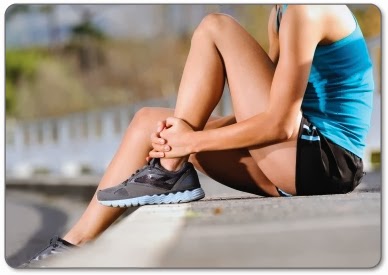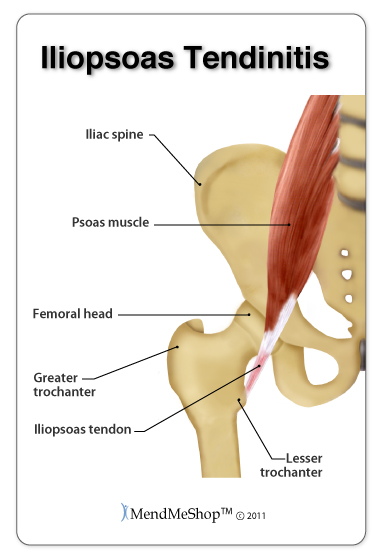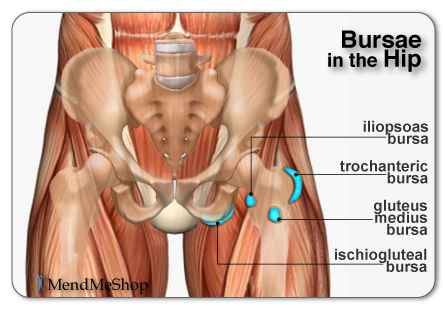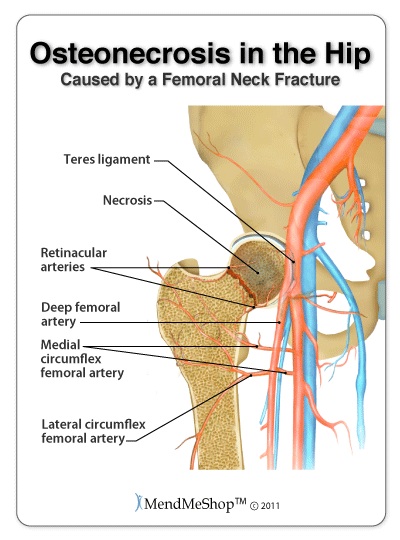Hip pain is a very common problem and there are many causes of hip pain despite many of these conditions being symptomatically similar. As such, it can be hard to discover the condition that you are dealing with - this is why it is important to have a correct diagnosis of the cause of your symptoms. This way the right treatment can be used to solve the condition and treat your pain.
Your hip has 5 bones and 17 muscles connecting your leg bone (femur), pelvis and spine all together. With so many connections of tissue to the bone it's easy to see why we can have pain in the front of the hip, buttock, side of the hip and even in your back.
Soft tissue, like tendons, ligaments and muscles, have a very important role in our daily movement of the hip and legs. This large ball-and-socket joint is placed under stress regularly. The tissue is pushed and pulled even while walking, which can lead to tiny tears in the connective tissue from muscle to the tendon. Hip tendonitis is often referred to as an overuse injury for this very reason.

Anyone can suffer from hip tendinitis, but it's most common in adults due to degeneration of tissue as we age. Over time the tendons in the hip will wear down resulting in something called degeneration. This is where the fibers in your tendons will become more weak - it's just a natural process that happens as we age.
The Importance of the Hip Joint to the Human Body is much the same as the Importance of the "Grand Central Terminal" to the City of New York. You may have heard the term "Everything flows through the hips" - and it is said for good reason!
Major nerves and arteries extending into the lower body pass through the hips, and pinch points for these major nerves are often found in the lower back or the hip. Pinched nerves can happen for many reasons, but soft tissue inflammation due to muscle imbalance, gait issues, and/or overcompensation is one of the major causes.
The amount of force that the hip bears is truly amazing when you delve into some data. If you can, take a look at the abstract from this study: "Hip joint loading during walking and running, measured in two patients" (PubMed,opens in new window). The forces measured were as a percentage of body weight from 2 subjects (one with a bilateral joint replacement and the other with one instrumented hip implant) and are as follows*:
*Bergmann G, E. A.
Bergmann G, et al. "Hip Joint Loading During Walking And Running, Measured In Two Patients. - PubMed - NCBI ." Ncbi.nlm.nih.gov. N. p., 2018. Web. 18 May 2018.
Hip injuries are quite common, often the result of a quick blow to the hip joint or through years of common movements such as climbing stairs or from sports such as golfing or skiing. Regardless of how the injury happens, a hip injury is painful and the joint can feel very unstable. Hip injuries can persist for years and can impede your ability to perform many common tasks that you probably took for granted before the injury. Recovery can take a long time but proper healing is essential to regain strength and get you back to the activities you enjoy.
Hip tendonitis can occur in any of the tendons that surround the hip joint. The most common forms of hip tendonitis are:
Iliotibial Band Tendonitis can cause pain on the outside the hip or the knee. The iliotibial band is a band of fibrous tissue that runs down the outside to the thigh from your hip to your knee. It provides stability to the hip and knee and its' job is to prevent the dislocation of the knee and hip joint. When the IT band becomes tight it rubs across the hip bone or the outside of the knee every time we move. This constant rubbing can cause degeneration (break-down) of the IT band tissue, or move the IT band over the hip bone (). Pain normally disappears as you stretch out the hip and knee. The tissue becomes more flexible and pain improves with rest.
Read more about Illiotibial Band Tendinitis here.
Gluteus Medius Tendonitis can cause pain over the outer side of your hip hip, the upper side of the buttock and even in the lower back at the spine. The gluteus medius tendon connects the gluteus medius muscle to your pelvis, and its' job is to help us move our thigh/leg away from the body and stabilize the hip while walking, running, and jumping.
Read more about Gluteus Medius Tendinitis here.
Iliacus Tendinitis or Iliopsoas Tendinitis both cause pain at the front of your hip. These muscles and tendons connect the pelvis to large leg bone (femur), and are often called the 'hip flexors'. They help with movements of the hip and leg to to pull the knee upward, help us stand, sit and lay down. You may have a greater risk of getting hip flexor tendonitis if you:
Read more about Hip Flexor Tendinitis here.

Severe tendinitis in your hip could result in pain, tenderness and even swelling in the area. The pain will continue to worsen if left untreated, as your tissue becomes more stressed and the tiny tears enlarge. If left untreated, the tissue continues to degenerate and loss of range of motion may start to happen. This can lead to other injuries in the hip area as your joint becomes weaker.
Many back and spine problems can cause symptoms around the buttocks and hip. Many of the most common back and spine problems will refer pain to the hip region so determining the root cause of hip pain is not always straightforward. Visiting your doctor is always recommended, as there are many possible issues that can happen within the back, buttock and hip. Sometimes, one set of symptoms can result in multiple diagnoses.
Conditions such as herniated discs, sciatica, strains of the muscles around the hip and pelvis can cause pain and spasm. Groin pulls and hamstring strains are also common. Another condition that could be causing pain in your hip is Gluteus Medius Syndrome. This presents as pain and inflammation on the outer portion of the hip, caused by a muscle tear or tear tendon in the Gluteus medius muscle.
The only way to know whether you have hip tendonitis for sure is through a diagnosis or consultation with your doctor. Physical examinations, magnetic resonance imaging (MRI), x-rays and other tests can help to determine if you suffer from hip tendonitis, or some other condition in your hip, back, hamstring, or buttock.
Some conditions that are symptomatically similar to hip tendinitis are as follows:
Snapping hip syndrome is when you feel a snapping sensation or hear a popping sound in your hip when you walk, get up from a chair or swing you leg around. This feeling and/or sound is made by a tendon in your hip as it moves over a bony bump. Most of the time this is more annoying than painful. However long-term snapping/popping can lead to hip bursitis, a condition that is very painful.
Trochanteric bursitis is an extremely common problem more so in women and the elderly. Hip bursitis is basically inflammation of a bursa in your hip that can cause pain over the outside of the hip joint and may go to the outside of the thigh. A bursa is a small sac of fluid, usually between bones and tendons, to provide lubrication to the hip joint. There are 4 major bursae in our hip to cushion the joint. As we age the bursae (plural of 'bursa') in our hip can age and break-down (degenerate) which can the risk of having a hip bursitis injury.

Greater trochanteric pain syndrome (GTPS)causes chronic pain on the side of the hip. Symptoms of GTPS include constant pain in the side hip that travels along the whole side of the thigh to the knee and occasionally below the knee and/or buttock. If you have this condition you will probably feel very specific point tenderness on the side of the hip.
Hip Arthritis is joint pain and can be described as a dull aching pain in the groin, outer thigh, or buttocks. You may feel more pain in the morning that could get worse as the day goes but generally lessens as you get more active. Doing anything vigorous can result in pain, stiffness and may limit your movements or make walking difficult. Arthritis means inflammation of a joint and there are a number of types of arthritis of the hip - including:
The labrum is the cartilage that surrounds the hip joint. If you have a tear in your labrum you may feel a catching sensation and pain in the hip joint, groin, stiffness and limited range of motion of your hip. Any changes or abnormalities in the physical structure of the hip can lead to a tear in the labrum cartilage.
Osteonecrosis is a disease that affects blood flow to an area of bone. This lack of blood flow to the bone in the hip joint causes tissue to die and the bone may eventually collapse. Osteonecrosis is a condition that develops in stages, general hip pain is usually felt first that may progress to a dull ache or throbbing pain in the groin or buttock area. If you have this condition you may also have more pain and find it difficult to stand and put weight on you hip. Moving your hip joint will also be painful. These stages can last anywhere from several months to over a year. Early diagnosis of this disease provides a much better outcome with consistent, proper treatment.

De-generative hip fractures are most common in elderly patients with osteoporosis. Treatment of broken hips requires surgery to either replace the broken portion or repair it with a metal plate and screws. Stress fractures of the hip are most common in athletes who participate in high-impact sports, such as long distance runners. Treatment is usually successful by avoiding the impact activities.
Developmental Dysplasia - When the hips are dislocated or out of position in infancy the joint may not develop properly. While this is not usually painful as a child, it will lead to early on-set arthritis and problems with walking.
Leg-Calve-Perthes Disease - This is a problem similar to osteonecrosis (see above) but in childhood. If severe, it can lead to permanent damage to this hip joint and early on-set arthritis.
Taking measures to protect your hips and maintain healthy joints is something everyone can do to help prevent hip pain. Should a hip condition or disease become a part of your life, understanding your condition is the first step in determining the appropriate treatment. Get an accurate diagnosis from your physician and discuss your options. Proper treatment will allow you to resume your activities faster and safer.
Product Advisors are available 9:00 am to 5:00 pm Eastern Standard Time Monday to Friday.
I want to learn more about Post-Surgery Recovery
I want to learn more about TShellz Wrap® Circulatory Boost
I want to learn more about Ice & Heat: Which Is Better For Treatment?
I want to learn more about Tendonitis Treatments
I want to learn more about Tendonitis Surgery
During your recovery, you will probably have to modify and/or eliminate any activities that cause pain or discomfort at the location of your soft tissue injury until the pain and inflammation settle. The more diligent you are with your treatment and rehabilitation, the faster you will see successful results!
Please be aware that this information is neither intended nor implied to be a substitute for professional medical advice. CALL YOUR HEALTHCARE PROVIDER IMMEDIATELY IF YOU THINK YOU MAY HAVE A MEDICAL EMERGENCY. Always seek the advice of your physician or other qualified health provider before using any of our outstanding products to make sure they are right for you and your condition or if you have any questions regarding a medical condition. Always see your doctor for a proper diagnosis as there are often many injuries and conditions (some very serious) that could be the cause of your pain.
© 2025 In.Genu Design Group, Inc. Contact Us